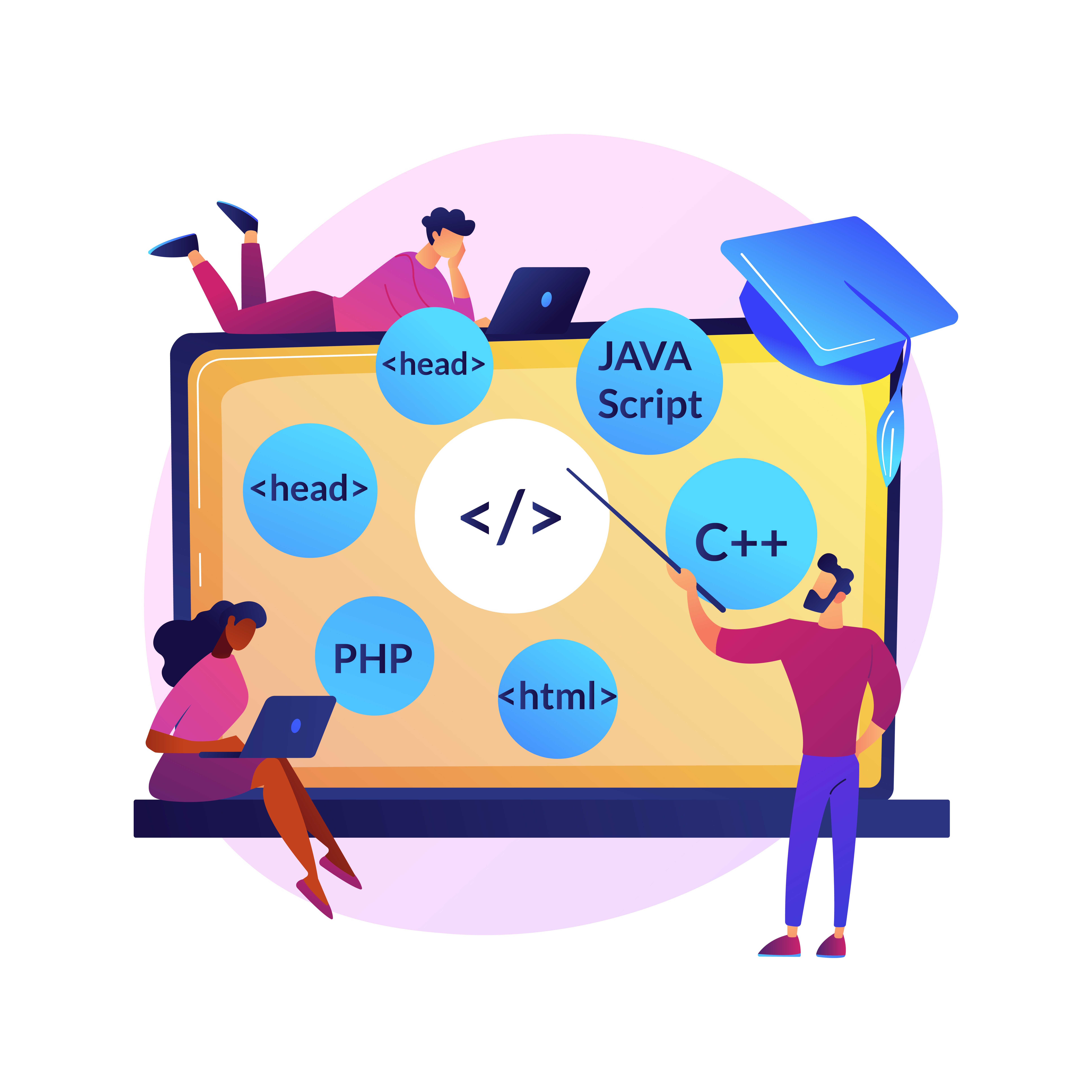Introduction
Programming languages are the backbone of the internet and every software development company.
Javascript
JavaScript, or JS to its friends, is the most popular programming language in the world. It is used to build websites, mobile apps and desktop apps. JavaScript is easy to learn but it also has a lot of power under the hood. You can use JavaScript for anything from simple web pages and front-end applications to 3D games and animations on your phone!
Python
Python is a general-purpose language that can be used for many different things. It is an interpreted language, meaning that it does not need to be compiled beforehand (like Java, C++, and Go). Python is a high-level programming language; this means that it provides higher level abstractions than machine code languages like C or assembly language. It also allows python programmers to work at a lower level than other high-level languages such as JavaScript or Ruby.
Python is multi-paradigm: it supports functional programming with lambda expressions and closures; object oriented programming with classes and inheritance; structured procedural programming with modules; generic algorithms through iterators/generators; and more! Python's dynamic nature means you can change your code while running it - no need to restart an app every time there's an update!
Go
You should learn Go if you want to try something different.
Go is a general-purpose, concurrent, garbage-collected programming language that focuses on simplicity and efficiency. It compiles quickly to machine code without having to use a virtual machine (VM).
Go is expressive, concise and clean. Its tooling and libraries are easy to use. The ecosystem encompasses unit testing frameworks, dependency management and static analysis tools.
Java
Let's take a look at Java. Java is a general purpose programming language that can be used to develop applications for almost any type of device, including web, desktop and mobile applications.
Many programmers choose to learn Java because it is ubiquitous—it's used in many different industries, such as game development, embedded systems and web development to name just a few.
Java is also popular among experienced programmers since it allows you to write code once and run it on multiple platforms without having to rewrite the program every time you move from one platform/device/language environment to another.
Kotlin
Kotlin is a statically-typed programming language that runs on the JVM. It was developed by JetBrains in 2011, and it was officially released as an open source project in 2012. Kotlin has similarities with Java, but it also has some differences from the language:
- Like Java, Kotlin provides object-oriented features like classes and interfaces.
- Unlike Java, Kotlin does not have checked exceptions because they create unnecessary boilerplate code when exception handling is done correctly at compile time (i.e., using try/catch blocks). Instead of adding all these extra lines of code for catching exceptions in your codebase every time you write something new/change existing functionality—which can be pretty tedious if you're working on a big project—Kotlin offers null safety so that there's no need for defensive coding practices (i.e., checking if variables contain null before accessing them). This makes things much easier when working with Kotlin than they would be otherwise because we don't need to worry about forgetting to do something else later down the line during development; however, this comes at cost: we lose some control over how our program behaves when accessing data stored as part of variables set up earlier within our programs (because they could potentially contain nothing).
PHP
PHP is the most popular programming language on the web. It’s easy to learn, use and powerful—and it’s used everywhere from small blogs to giant e-commerce sites like Amazon.
PHP stands for “PHP: Hypertext Preprocessor,” but that doesn't really mean anything anymore (the original creator of PHP had no idea his project would take off as much as it did). Nowadays you can use PHP for just about any type of web development project, including:
- Content Management System (CMS) development
- Web application development (like WordPress)
- Mobile applications
- Desktop applications
C#
C# is a general-purpose programming language that was developed by Microsoft as part of its .NET initiative.
It's a simple, modern, and object-oriented programming language. C# code can be compiled to native machine code for any class of devices that supports the .NET runtime or converted into traditional bytecode for use in distributed scenarios like ASP.NET applications or XML Web Services.
C# was designed to be familiar to C++, Java and Delphi programmers so they could easily learn the new language without having to start from scratch.
Swift
Swift was introduced by Apple in 2014, and it quickly became one of the most popular programming languages. It has a reputation for being fast and easy to use.
Swift is a multi-paradigm programming language supporting object-oriented programming and procedural programming. It also supports generic programming, and includes features such as closures, extensive support libraries, C interoperability, dynamic library loading (DLLs), and bindable types. Swift is suitable for many different uses including systems software development of operating systems, device drivers and networked services; it may also be used to develop applications for iPhone iPad iPod Touch Apple Watch watchOS tvOS macOS Windows Linux Android iOS in addition to Linux environments such as Ubuntu
R
R is a programming language and software environment for statistical computing and graphics. It provides a wide variety of statistical and graphical techniques, including:
- linear and nonlinear modelling, classical statistical tests, time-series analysis, classification, clustering, ...
- advanced graphics functions (3D plots etc.)
It is an open source language that can be used to develop commercial products. R was developed by Ross Ihaka and Robert Gentleman at the University of Auckland in New Zealand.
Ruby
Ruby is a dynamic, open source programming language with a focus on simplicity and productivity. It has an elegant syntax that is natural to read and easy to write. Ruby was created by Yukihiro “Matz” Matsumoto in the mid-1990s, and it's used in a wide variety of applications ranging from mobile apps to finance software.
While you can use Ruby on its own, Rails is another framework that's built in the language (Rails' architecture makes it possible to build web applications very quickly). If you have any interest in programming or web development at all, learning Ruby will prove immensely valuable because there are so many jobs available for programmers who know this language.
C and C++
C and C++ are both general-purpose, imperative computer programming languages. They form the basis for many other languages, including Java and PHP.
C is a compiled language, which means that it is translated into machine code before being executed. This has two major benefits: firstly, that it allows for more efficient execution of programs (since there are no intermediate steps between source code and binary) and secondly, that it makes it easier to write programs in high-level languages without worrying about low level details like memory management (although these can still be done manually).
C++ is an extension of C which supports object oriented programming as well as some other features from other languages such as templates or exception handling.
Matlab
Matlab is a programming language that has been around since the 1980s. It’s used in engineering, science, finance and medicine to process large amounts of data. Matlab is a high level language that provides easy access to matrix operations and mathematical computations. The main use case for this language is rapid prototyping but it also has some other very interesting applications like machine learning or artificial intelligence (AI).
TypeScript
TypeScript is not a new programming language, but it's certainly one of the most popular ones to learn right now. TypeScript is a superset of JavaScript and has been around since 2014.
The main difference between TypeScript and plain old JavaScript is that TypeScript supports static typing, which means it can detect errors at compile time rather than runtime. The benefit of this feature is that it makes your code more robust and less prone to bugs, because you won't accidentally pass the wrong data types or misspell something when doing so would otherwise result in an error being thrown at runtime (and possibly crashing your program).
Scala
Scala is a general-purpose programming language designed to express common programming patterns in a concise, elegant, and type-safe way. It smoothly integrates features of object-oriented and functional languages, with static typing and type inference. Scala has garnered a large following by being compatible with the Java Virtual Machine (JVM), but not just on that platform; it can also run on the .NET Common Language Runtime (CLR).
To run Scala code, you need a Java Runtime Environment (JRE).
Conclusion
We hope this list has been informative and helped you in your decision-making. If you need any more information or want some help deciding which language is best for you, please contact us!



